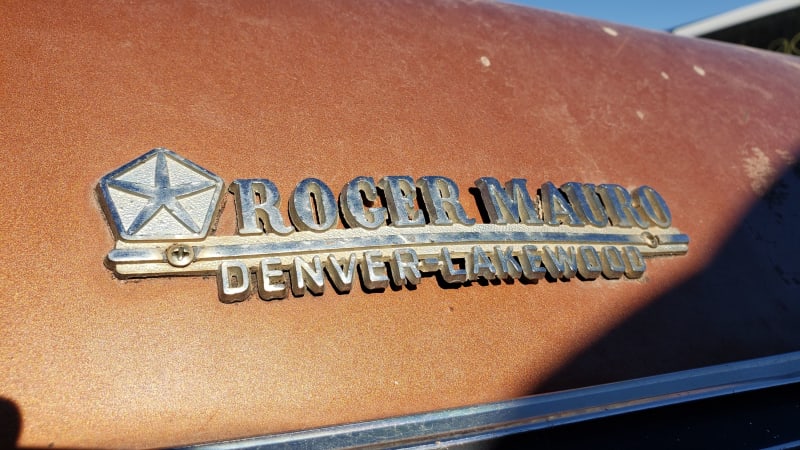The Plymouth Fury was once among the most commonplace vehicles on American roads, with the 1970s being the most Furious decade of all. If you’ve watched a lot of Malaise Era cop shows, you’ve seen endless examples of the 1975-1978 B-Body Fury sedan; today’s Junkyard Gem in Colorado is a civilian version with a very unusual combination of features and options.
Though the 1975-1978 Fury is sibling to many much more famous B Platform Chryslers, including the Dukes of Hazzard General Lee and a lot of other highly revered Mopars of the late 1960s and early 1970s, it doesn’t get the recognition it deserves today. Would the world be the same if Debbie Harry had posed in her Anya Phillips dress on the bumper of, say, a Ford LTD instead of the iconic ’76 Fury on the cover of Plastic Letters? I’ve got this album cover hanging on my garage wall, right next to Sir Mix-a-Lot’s My Hooptie and its ’69 Buick Electra.
This sun-baked ’75 left the assembly line with some nice luxury options for an affordable midsize sedan of its time, including a padded vinyl roof.
Factory air conditioning was a $437 option on the Fury in 1975, a price tag that comes to an attention-grabbing $2,185 in 2020 dollars. The MSRP on a Fury sedan that year started at just $3,571 ($17,840 today), so A/C jacked up the cost by close to 15%.
The base engine was a 225-cubic-inch (3.7-liter) Slant-6, but this car took the next step up on the Fury engine hierarchy for 1975: a 318-cubic-inch (5.2-liter) V8 making 145 horsepower.
Here’s where things get a bit weird. That shift lever on the steering column controls a three-speed manual; this rig is commonly known as a three-on-the-tree. The most popular transmission setup on Detroit cars of the 1940s through the early 1960s, the good ol’ three-on-the-tree survived here all the way through the 1979 model year in new cars and 1987 in new trucks. By 1975, most lower-priced American mid- and full-sized cars had the three-on-the-tree as base equipment, but by that time nearly every new-car shopper here opted for an automatic transmission or — occasionally — a floor-shifted three- or four-speed manual. The total number of 1975 Fury buyers who sprang for the V8 engine, air conditioning, and a vinyl roof yet still kept the old-fashioned three-on-the-tree transmission setup probably can be counted in the low hundreds, if even that many. Perhaps this person hated automatics but also insisted on being able to squeeze three adults into a front bench seat with no floor shift knocking the middle passenger’s legs.
The Fury had lived on the big C-Body platform for the previous decade. For 1975, the C-Body Fury became the Gran Fury, just as Ford spun off a smaller LTD II a couple of years later and, soon after, Toyota capitalized on the American-market success of the Corolla name by slapping it on the unrelated Corolla Tercel. This one sold new in Denver and will be crushed, 45 years later, in Colorado Springs.
You’ll find one in ever car. You’ll see.
This car got trashed in comprehensive fashion prior to coming here and there’s not much enthusiast interest in rusty Malaise Era Detroit sedans, so it stood about zero chance of being fixed up. Still, an interesting piece of our automotive heritage.
New dimensions, new style, and a whole new attitude!








